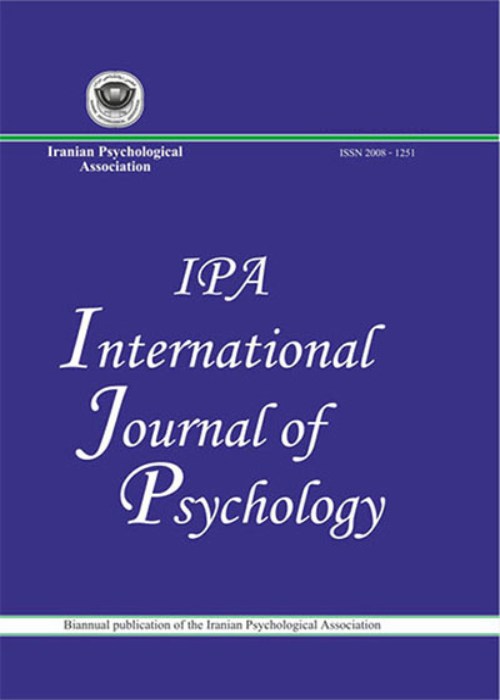A latent growth curve model of academic motivation and academic self-efficacy of Shahid Chamran University students
Author(s):
Article Type:
Research/Original Article (دارای رتبه معتبر)
Abstract:
In this study, a latent growth curve model of academic motivation and academic self-efficacy in Shahid Chamran University students was tested. The research method was developmental and of a longitudinal type. More precisely, the latent growth curve model was used to answer research questions. The statistical population of this study was all newly-arrived freshmen students of Shahid Chamran University in Ahvaz in the academic year of 2016-2017, who were 1988 students. Random sampling method was used to select newly-arrived students. From 13 departments of Shahid Chamran University of Ahvaz, 4 were randomly selected and all of their freshmen students filled out the questionnaires. The sample size of this study was 678 students. The instruments of this study include Academic Motivation Scale (AMS) and Academic Self-Efficacy Scale. Results showed that the mean score of intercept of academic motivation (at the beginning of university studies) was higher than the mean score of intercept of academic self-efficacy. Although the mean score of slopes of academic motivation and self-efficacy were decreased among the students during the three measurement times in university, the self-efficacy slope was not significant. Also, students who had high academic motivation at the beginning, had high scores in academic self-efficacy too, and those who had made progress in their academic motivation during the one year study, have improved their academic self-efficacy too. Moreover, all the variances were significant. The results showed that the interpersonal variations support adding the predictor variables to the model. Also, the results indicated that gender was a significant predictor for academic motivation at the beginning of university studies. The results showed that the females' academic motivation, at the beginning of university, on the average, was more than the males’, but the difference was not significant during the first year in university. Also, at the beginning, the academic performance was a significant predictor of academic self-efficacy. In other words, at the start of university studies, on the average, the high academic self-efficacy was associated with high academic performance, but the difference was not significant during the three measurements. Moreover, the non-linear model's goodness of fit statistic was better than the linear models.
Keywords:
Language:
English
Published:
International Journal of Psychology, Volume:13 Issue: 1, Winter-Spring 2019
Pages:
157 to 182
magiran.com/p1953655
دانلود و مطالعه متن این مقاله با یکی از روشهای زیر امکان پذیر است:
اشتراک شخصی
با عضویت و پرداخت آنلاین حق اشتراک یکساله به مبلغ 1,390,000ريال میتوانید 70 عنوان مطلب دانلود کنید!
اشتراک سازمانی
به کتابخانه دانشگاه یا محل کار خود پیشنهاد کنید تا اشتراک سازمانی این پایگاه را برای دسترسی نامحدود همه کاربران به متن مطالب تهیه نمایند!
توجه!
- حق عضویت دریافتی صرف حمایت از نشریات عضو و نگهداری، تکمیل و توسعه مگیران میشود.
- پرداخت حق اشتراک و دانلود مقالات اجازه بازنشر آن در سایر رسانههای چاپی و دیجیتال را به کاربر نمیدهد.
دسترسی سراسری کاربران دانشگاه پیام نور!
اعضای هیئت علمی و دانشجویان دانشگاه پیام نور در سراسر کشور، در صورت ثبت نام با ایمیل دانشگاهی، تا پایان فروردین ماه 1403 به مقالات سایت دسترسی خواهند داشت!
In order to view content subscription is required
Personal subscription
Subscribe magiran.com for 70 € euros via PayPal and download 70 articles during a year.
Organization subscription
Please contact us to subscribe your university or library for unlimited access!



